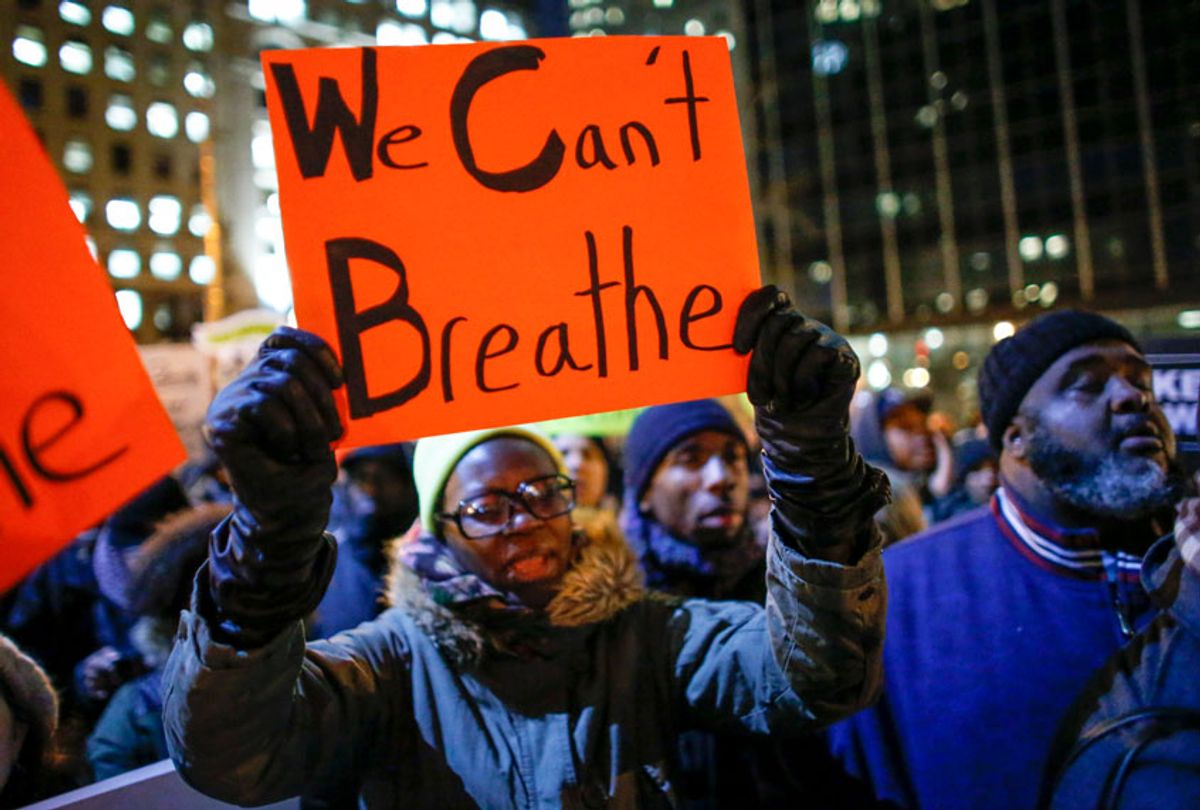Depending on who you are and what news you follow, you may or may not recall in fullness the lives and deaths of Eric Garner, Ezell Ford, John Crawford and Sandra Bland.
You've likely seen the horrific video that captured the chokehold that ended Garner's life, but can you recall that Ford — who police shot in the back — had a history of mental illness? Perhaps you know the story about the man who went to Walmart and died in its aisles, but can you recall his name? Do you still wonder why so few details emerged about the mysterious death of Bland after her needless arrest?
You should.
As Eric Garner's mother, Gwen Carr, said of these tragic deaths, for the families, this isn't just some passing remembrance or fading headline. "This was our real lives," she said.
Executive produced and narrated by Viola Davis, the new docu-series, "Two Sides," arrives on TV One Monday, January 22 and aims to present the full stories from all angles tied to these fatal police encounters that launched mass protests across the country, keeping them as present and as real as possible.
https://www.youtube.com/watch?time_continue=30&v=mZaLJN98Ptg
Robyn Greene Arrington, vice president of original programming at the network, explained that the stories of Eric Garner in New York, Ezell Ford in California, John Crawford in Ohio, and Sandra Bland in Texas, were chosen because they were "high-profile" but also because “We wanted to represent the country at large," she said, adding that they wanted to show that fatal police encounters aren't confined to any coast or region but are nationwide phenomena.
The first hour-long episode follows the events leading up to the death of Eric Garner, whose story is perhaps the most well-known of the four. The story is familiar, but the attention to detail here is new. More than just a sharp picture of that fateful day, the episode shows the ways in which police harass and surveil communities of color and how people like Garner, who was known to sell loose cigarettes to support his family, are targeted under the guise of "quality of life policing."
It's a type of broken-window policy Carr knows intimately. "Our communities are targeted, they just come into our communities and if they feel like it, just harass and abuse us," she said of the police in an interview. "I wasn’t an activist before, I was just a regular mom." Since the death of her son though, she says that being just a mom was no longer a true option.
This is the labor required for many black families who've experienced brutality and killings at the hands of the police, especially given how inadequate and flawed the criminal-justice system can be in response to such incidents. Indeed, Stacey Artis — who describes herself as a second mother to John Crawford — notes how many black victims of police killings are framed as "villains" in the eyes of the law.
She recalls calling Crawford's mother shortly after his killing became public, telling her to "get ready." Artis warned her, "they getting ready to tell all types of lies on your baby, and anything that he ever did wrong from the time he came out the womb to the time they murdered him, they’re going to bring it up." Little missteps or trespasses, no matter how mundane, irrelevant or minuscule, can become fodder for police justifications.
As enraging as that and other facets of police killings can be, there is far more than anger on offer in a viewing of "Two Sides." More than anything, producers Julius Tennon and Lemuel Plummer want viewers to leave the show more informed. They seem to have succeeded.
Darren Dickerson of L. Plummer Media said the series helped humanize not only the victims discussed, but police officers as well. "What I’ve learned is that they are human beings like anyone else," he said. "Because we live in a world and a society, where race, our relationship to culture, environment, plays so much into these incidents, it’s hard for me to hear the psychology coming from the officers without understanding that they are also living in a fog of implicit bias."
In the episode about Garner, for instance, the focus moves away from scrutinizing the specific fatal actions of officer Daniel Pantaleo to explores the system that ruled a death a homicide, yet found no one responsible for it.
The episode ends with Reverend Al Sharpton making a profound point. "Police leave home every morning, not knowing if they're going to come back alive," he said, "and I understand that. But what they need to understand is that some of us do too." It's an odd echo of Artis' claim that "For me, being a mother of four boys, it’s nerve-racking when they step out the door."
Yes, in unequal ways, the daily risks presented by being black in America has some similarities to threats police face working in the line of duty. Yet, officers can take off their uniforms. More importantly, they have a system that protects them, a team of fellow cops, prosecutors, judges and politicians that has their backs. And yet, it is they who are afforded public trust and empathy, even when they violate it.
Still, there is a value to seeing each shooting from two sides, from knowing what has happening behind the gun as well what happened in front of it. In truth, that's the only place where change can happen such that new stories like Garner's, like Ford's, like Crawford's, like Bland's become fewer and farther between.
"Two Sides" premieres on TV One Monday, January 22.

Shares